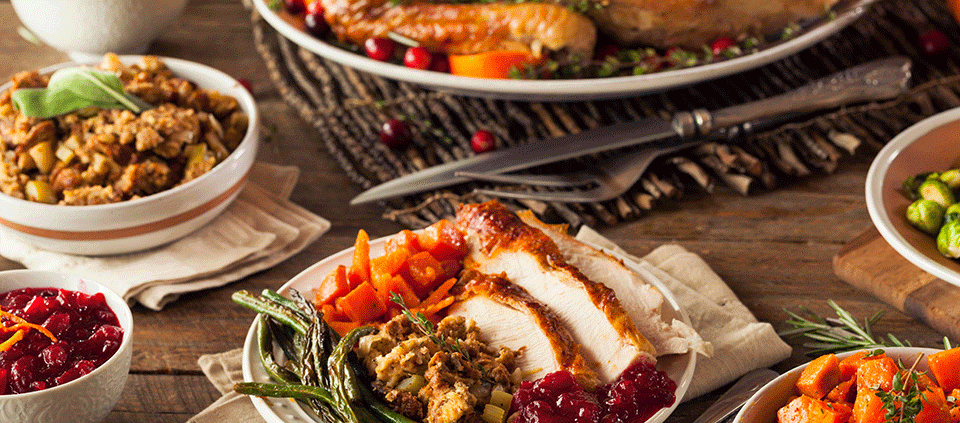How to Have a Nutritious Thanksgiving

With all the focus on overindulgence—of food and family—we often forget that Thanksgiving is, at heart, a day for giving thanks and being grateful. That said, let’s get back to the food!
Some of us choose to “let go,” and eat whatever we want, giving ourselves myriad excuses: It’s tradition, it’s etiquette, it’s just so delicious! But Thanksgiving offers a bounty of ways to enjoy fresh, local vegetables, so while it’s okay to treat yourself, it’s also entirely possible to indulge but not overeat—and, even, put together an optimally nutritious Thanksgiving dinner that sacrifices neither taste nor holiday spirit.
Still, if you can, try to avoid flour and bread products, says John Bagnulo, PhD, MPH, a nutritionist and Kripalu presenter. “This will significantly help reduce the tendency to overeat,” says John. “Grains and flour raise levels of leptin—the hormone that controls appetite and cravings—more than any other food after sugar.” We asked John to share his ideal grain- and cruelty-free Thanksgiving meal.
Free-range, pasture-raised, heritage breed turkey. This turkey will likely only be available at your local CSA, farm, or farmers’ market. If you don’t have access to any of those, choose a turkey that’s antibiotic-free. A pasture-raised bird is the gold standard; one that’s organic but not necessarily free-range or pasture-raised might be your second choice; a drug-free is your most basic choice. Do the best you can, but don’t stress. It’s just one meal.
Sweet potatoes or winter squash. Both are high in vitamins and minerals—beta-carotene, vitamin C, and potassium, to name a few—and have a low glycemic index. The potassium in particular will help with muscle recovery, from all that front yard football you’ll be playing.
Boiled onions. Anti-inflammatory and high in B6, onions are also great for weight loss thanks to lots of fiber and the presence the antioxidant quercetin, which helps increase energy expenditure, or calorie burn. Preparation by boiling cuts down on the fat content inherent in sautéing and other forms of cooking without sacrificing any of the flavor.
Collard greens sautéed with garlic, onions, and olive oil. The fiber content in tasty collards will fill you up with minimal calories; it’s also high in calcium.
Homemade cranberry sauce made with a bit of sugar—just enough to take away some of the bitterness, but not all of it!—and lemon or orange zest. Cranberries are powerful antioxidants. The berries also help ward off common foodborne pathogens, should Aunt Millie’s stuffing accidentally sit out too long.
And for dessert, apple pie made with an almond butter crust and topped with whipped coconut cream. Grain-free and dairy-free, it’s the ultimate feel-good indulgence. To make the crust, combine ¾ cup ground almonds with 2 tablespoons of coconut oil and one egg. (You can also use ½ cup of crunchy almond butter, 2 eggs, and 2 tablespoon of coconut flour.) Because really, what’s Thanksgiving without pie?
© Kripalu Center for Yoga & Health. All rights reserved. To request permission to reprint, please e-mail editor@kripalu.org.